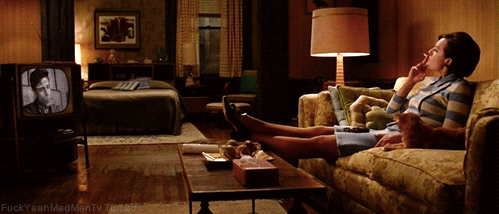What’s a TV show that you put on while doing other things? In talking with friends (and sometimes strangers) about their viewing habits, I’ve noticed a growing trend surrounding “Background TV,” one that exists even for those who don’t have to try and keep up with the over 450 scripted shows on the air this year as part of their job. Background TV isn’t necessarily a product of the Peak TV era — people have been putting on shows for noise or background entertainment forever. The difference (at least, that I am postulating) is that background programming in the Peak TV era is trending towards scripted series rather than, say, the old standard of news or nature documentaries. There are some shows that demand your undivided attention, but there are also others whose quality may waver to the degree that just checking in between doing other things feels like enough.
So what defines a Background TV show? A lot of it is down to personal preference, but there are a few objective hallmarks. It’s a series where you don’t have to catch every dramatic beat or character moment to keep up with what is happening when you check back in. If you feel like you’ve missed something important or can’t follow the plot without keeping a close eye on the show, it’s not a background series.
But the term “Background TV” is not synonymous with “Slow TV. Think of a Slow TV bastion like SundanceTV’s Rectify, which was so beautiful and full of quiet moments that demanded your consistent visual engagement in order to appreciate the series’ emotional depths. Now compare that with a show like, say, Netflix’s Iron Fist, where you can sleep through several episodes and return to it without losing much ground. I didn’t hate Iron Fist like some did, but it is one of the best definitions of a background show because of its stagnant narrative and plethora of non-essential moments (in fact, all of the Defenders series — and The Defenders itself — make for excellent background shows).
Background TV equals a show you can’t fully commit to, but are interested in enough to spend some time with. It’s the casual dating of TV watching. But Background TV can also be a beloved series of yore that you’ve seen so many times that you know what’s going to happen on it anyway, so while having it on is comforting, it doesn’t need the same attention you gave to it the first time through.
There are also the kinds of shows where you inadvertently drift to your phone and start checking Twitter and reading Reddit. If you’re doing that, you’re not paying attention to the show that’s on at all — you cannot, actually. In fact, it’s worth noting the whole practice of multitasking could be messing with our minds in unfortunate ways in regards to cognition, communication, and memory. But ... there’s so much TV to watch!
I’ve been hesitating to mention more of what I define as “background series” by name, because I completely get that it’s insulting to the people who have made these shows. It’s not always a negative, though. PBS’s The Durrells in Corfu is a great background show, and I say that in a loving way — it’s light, sweet, and not exceptionally convoluted in its plot. It relaxes me. But the other side of what defines Background TV is what you’re doing in the foreground. I used to get a lot of minor chores done while watching the Thursday night Shondaland series on ABC. Though they are insanely twisty and full of character drama, I was doing rote tasks while watching them that didn’t take me away from the action … but distracted me just enough that those shows also didn’t exasperate me as much as usual.
No matter how you specifically define it, there’s no denying that Background TV is a real and growing phenomenon. Its existence has also added a new layer to conversations I have about what TV I recommend to people. “Which ones can I watch in the background?” everyone now asks. That’s a good question.



